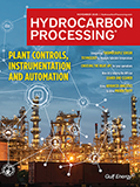Economics
Bangladesh needs $1 B to import fuel oil and avert an energy crises
Bangladesh's private power producers will need $1 B in foreign currency to import fuel oil and avert an energy crisis this summer.
Chinese refining utilization dropped in 2022: The first time since 2000
In 2022, Chinese refiners processed less crude oil than they did in 2021, which was the first year-over-year decrease in processing according to data going back to 2000.
U.S. diesel prices drop as Europe's ban on Russian imports begins
U.S. diesel prices have dropped this month and could go lower, analysts said, an unexpected swoon that coincided with the start of a British and European Union ban on Russian fuel imports.
Russian energy minister sees no reason to reduce petroleum products output
Russian energy minister Nikolai Shulginov on Friday said there was no reason for a sharp reduction in the country's petroleum products output in response to a European Union embargo, Interfax reported.
Kazakhstan increased oil exports bypassing Russia in 2022
Kazakhstan, the world's largest landlocked country, increased oil exports that bypassed Russia last year, but was still heavily reliant on supply channels via its neighbor.
How digitalization is turning data into value in the heart of the refinery: FCC catalysts
Digitalization has impacted the world of refining for the past several decades.
Business Trends: Tier 3 gasoline production: Challenges and opportunities for refiners
One of the biggest challenges to the crude oil refining industry over the past decades is the development of technologies capable of reducing the environmental impact of crude oil derivatives, while also raising their performance.
Oil expects regional refining margins to stay elevated in 2023
South Korea's S-Oil said on Wednesday it sees regional refining margins in 2023 remaining elevated over pre-2022 levels, though the company posted a loss in the fourth quarter of 2022 on a fall in oil prices during the period.
EU diesel price cap to limit Moscow's choice of buyers, including Asia
A proposed EU price cap on Russian diesel may be high enough to allow Moscow to continue exporting the fuel, but in practice could deter big Asian buyers who have become used to buying cheap Russian crude to refine it themselves, analysts say.
Chevron annual profit doubles to record $36.5 B, but misses estimates
Chevron Corp. on Friday posted a record $36.5 B profit for 2022 that was more than double year-earlier earnings but fell shy of Wall Street estimates, undercut by an asset writedowns and a retreat in oil and gas prices.

- Kumho Mitsui Chemicals to increase capacity of MDI production facilities 12/15
- ABS, Eneos, NYK Line and Seacor Holdings launch joint study to develop a methanol marine fuel supply network in the U.S. 12/15
- ENEOS accelerates AI-driven materials discovery of immersion cooling fluids and novel catalysts Using NVIDIA ALCHEMI 12/15
- SAMSUNG E&A wins FEED contract for nearly $5-B SAF plant in the U.S. 12/15
- KBR wins green ammonia project by IGNIS in Spain 12/15
- Phillips 66 announces $2.4-B capital budget for 2026 12/15




